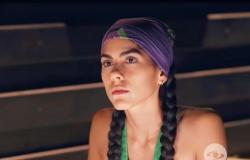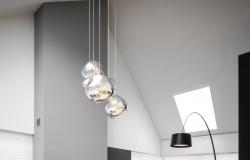The Aragonese Institute of Contemporary Art and Culture (IAACC) Pablo Serrano has incorporated one of the Crivillén sculptor’s ‘Vaults for Man’, number 28, into its permanent collection after purchasing it from an Italian collector. “Pablo Serrano worked on thematic series,” said exhibition curator Dolores Durán this Monday, who dedicated her doctoral thesis to the artist. “And that of the ‘vaults’ responds to his reflection on the meaning of man in the world, on his need to have shelter. Throughout his life, he made more than 70 vaults, the vast majority of them between 1961 and 1963. A part of them was exhibited in the Roman gallery L’Attico, before the sculptor took 23 of them to the Spanish Pavilion at the 1962 Venice Biennale. In that Biennial, Pablo Serrano was very close to winning the Grand Prix for Sculpture: he was only one point behind Alberto Giacometti.”
The work acquired by the Government of Aragon for the Pablo Serrano Museum is number 28 in the series and measures 52 by 62 centimeters. It was one of those that was previously shown at the L’Attico gallery, before going to the Biennale. Already in the gallery it was sold to the Milanese collector Romano Lorenzin and did not return to Spain. According to the director of the Pablo Serrano Museum, Julio Ramón, it passed from Lorenzin’s hands to another collector, Luigi Frignani, who is the one who sold it to the Government of Aragon for 15,000 euros, a price significantly lower than its market value. “It was the Italian collector who contacted the museum,” Julio Ramón said this Monday. “He knew about our existence, he wanted to sell it and he contacted us because he understood that it was the right place.”
The work has been incorporated into the exhibition discourse of the space dedicated to Serrano in the museum (the center previously housed a dozen ‘vaults’) and is presented alongside a display case with photographs of the Spanish pavilion at the Biennale and a personal notebook of the artist in which he collected all his works.
The newly acquired sculpture was presented this Monday by the General Director of Culture of the Aragonese Government, Pedro Olloqui; the honorary director of the IAACC Pablo Serrano, Susana Spadoni; Lola Durán; and the museum director, Julio Ramón; in an event in which Luis Nozaleda, member of the museum’s advisory commission, also participated.
Olloqui highlighted that the “Pablo Serrano Museum is essential to understand modernity.” “To be Aragonese is to be radically modern,” he added. “This museum is not only a cultural engine of the Aragonese autonomous community. It is also a symbol that we cannot renounce. The first 20 years of the 21st century is a stage of splendor in culture Aragonese”. Julio Ramón, for his part, highlighted that the sculpture was “in good condition”, although minimal cleaning tasks have been carried out.. “At some point it has been outdoors, although protected, and had some small chloride marks (normal on bronze pieces) and some insects had nested in the recesses of the work.”
Susana Spadoni, daughter-in-law of the sculptor and honorary director of the IAACC Pablo Serrano, thanked the Government of Aragon for the purchase, while revealing that the price paid for it, 15,000 euros, is “very reasonable”, since On the market it could have been sold for 90,000 and 100,000 euros.
Within the career of Pablo Serrano (Crivillén, 1908 – Madrid, 1985), the decade of the 60s represents a period of intense artistic creation, which would give rise to some of his most significant sculptural series: ‘Vaults for man’, ‘Vault-Men’, ‘Yunta-Units’, ‘Lighting’ and ‘Door-Men’. It was in these series where Serrano began to interpret in a sculptural key the personal humanist discourse that characterized him. The artistic fertility of this stage would lead to the consolidation of the sculptor on the international scene, through his participation in a considerable number of individual and group exhibitions. In this sense, the two works that he contributed to the exhibition ‘New Spanish Painting and Sculpture’, held at the MoMA in New York in 1960, and his participation in the Venice Biennale, which established him internationally, stand out.





